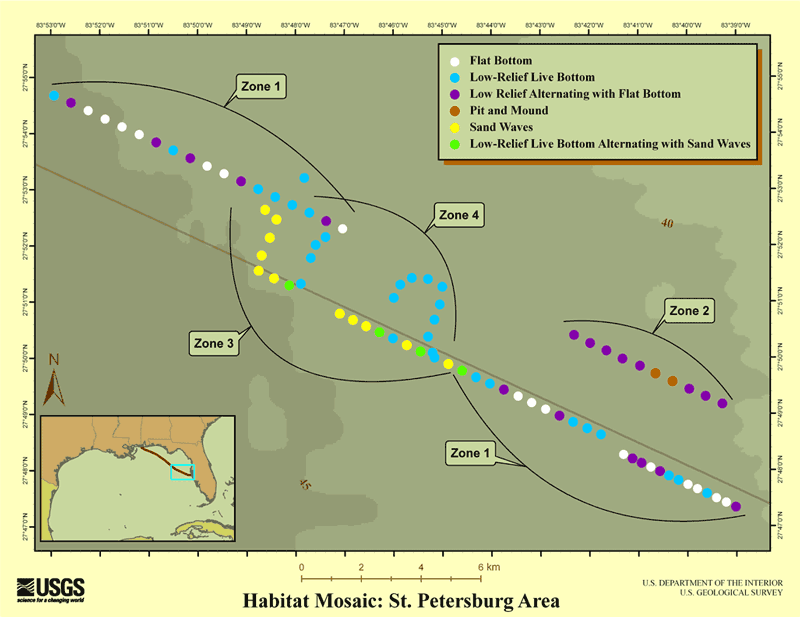USGS Open-File Report 2011-1172
By Ellen A. Raabe, Robert D'Anjou, Domonique K. Pope, and Lisa L. Robbins
Overview | Study Locations | Seafloor Habitats | Habitat Mosaic | Resources
The seafloor is a mosaic of benthic habitats. Historic sedimentation and shoreline processes, modern wave energy and currents, and biological activities help to shape and merge benthic habitats into a complex underwater landscape. This mix of habitats serves to support the wide range of marine life found on the Florida shelf. Four common transition zones between different seafloor habitats were identified:

Zone 1 - This area is characterized by transitions between low-relief live-bottom habitat and flat sand habitat. This transitional habitat is largely controlled by the thickness of the surficial sediment. In areas of a thicker surficial sand, hardbottom remains covered by sediment and there is little to no sponge or coral growth. Areas of thin sand expose the underlying rock and extensive live-bottom habitat.
Zone 2 - A unique mosaic of live-bottom, flat bottom, and pit-and-mound habitats. Transitions among the three habitat types occur frequently in the St. Petersburg and Florida Middle Ground Areas. The video footage shows low-relief live bottom alternating with flat sand with a brief transition into a pit-and-mound habitat and subsequent transition back to the live-bottom and flat sand mix.
Zone 3 - The transition between sandwave formations and low-relief live bottom creates a unique pattern of habitats and species diversity. The sandwave structures are created as energy enters the system, transporting sediment from the troughs and depositing it onto consolidated crest structures. As the sediment is taken away from the sandwave troughs, hardbottom is exposed and a live-bottom habitat develops within the troughs.
Zone 4 – Low-relief live bottom occurs frequently throughout this zone, indicating that hardbottom is near to the surface even when it remains unexposed. This area contains a wide array of marine life, including echinoids, tunicates, sponges, coral, fish, as well as numerous other species, all of which find shelter in the extensive structure of the live-bottom areas.